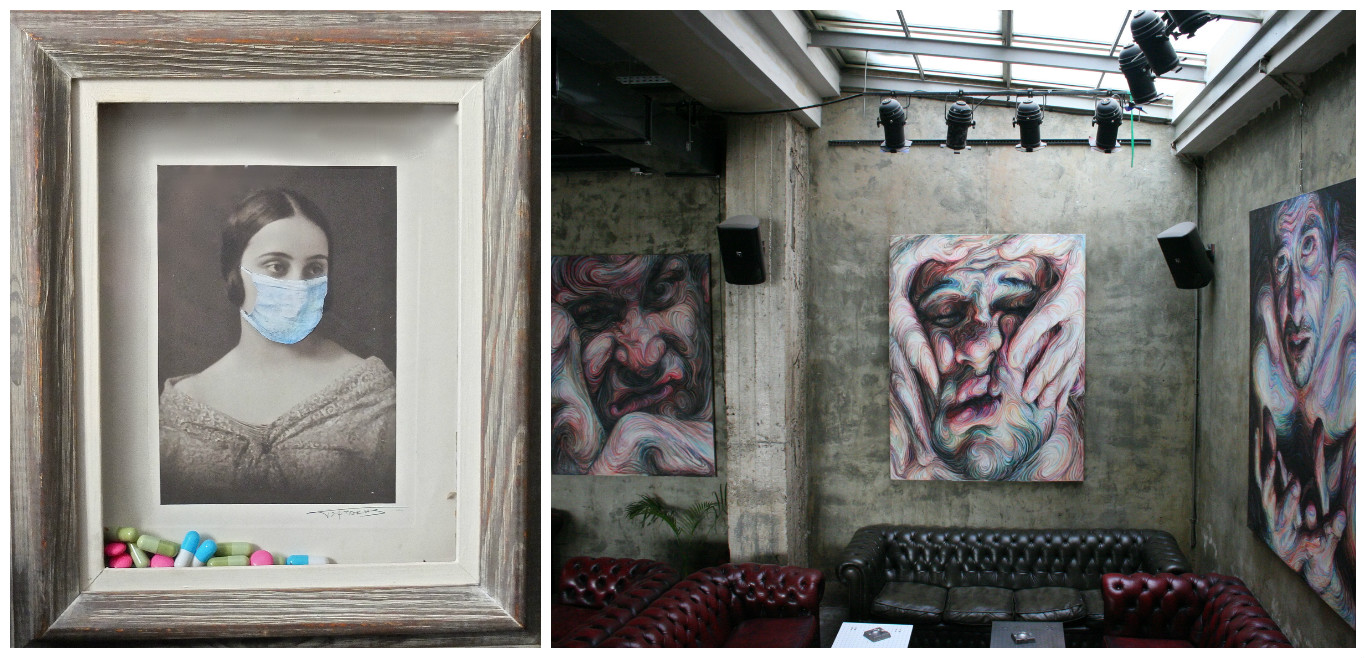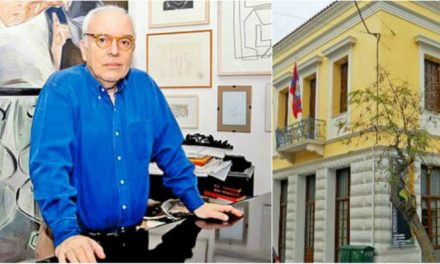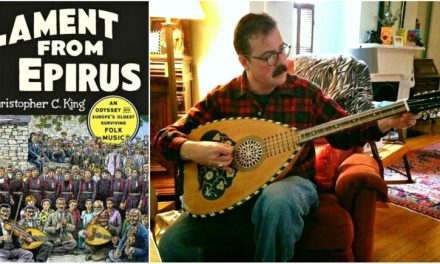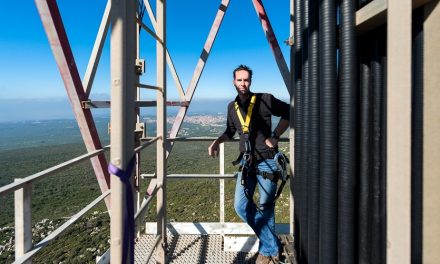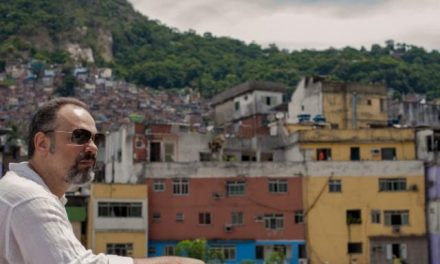Visual artist Nikos Gyftakis* spoke recently to our sister publication, Grèce Hebdo**, about his work and shared his view on the contemporary arts scene in Greece. He also revealed his special relationship with music, his upcoming solo exhibition in Switzerland and the group exhibition he will take part in, on the occasion of the European Capital of Culture – 2017 Paphos events.
What is your view on the contemporary arts scene in Greece? Do you think that the level of artistic production could be considered as Greece’s advantage over other countries?
Fine and Applied Arts in Greece are of a high level. From theatre to painting, the contemporary arts scene in Greece has a lot to offer and it does offer a lot worldwide. Everyday problems create the need to resort to what psychoanalysts call “safe places”, with art constituting perhaps the safest haven of all; also, the absurdity that we have been experiencing in recent years at various levels, fuels our imagination even more and makes the need to comment on reality through art emergent.
Fluid and swirling lines is a characteristic feature in your portraits which gives movement and liveliness to the faces portrayed. Why do you choose this structure?
Many years ago, during my studies at the School of Fine Arts, I came to a point where I had to find my identity, my personal style…both artistically and personally. I started studying philosophy, writing, and doing many drawings and sketches. The fluidity and swirl that you mentioned is the result of all the above. If we look at a finger from a close distance, we will see the fingerprint which is nothing more than a synthesis of countless curved lines swirling and each time creating a unique effect. If we look at it from far away, we stop seeing these lines and we see only the finger… and from even farther we see only the hand and so on… In other words, just like the water “moulds“ the ground creating thus the uniqueness of each landscape, I choose the color and the curved line so as to imprint the human psyche of the person I choose to paint in a way that his/her uniqueness is demonstrated.
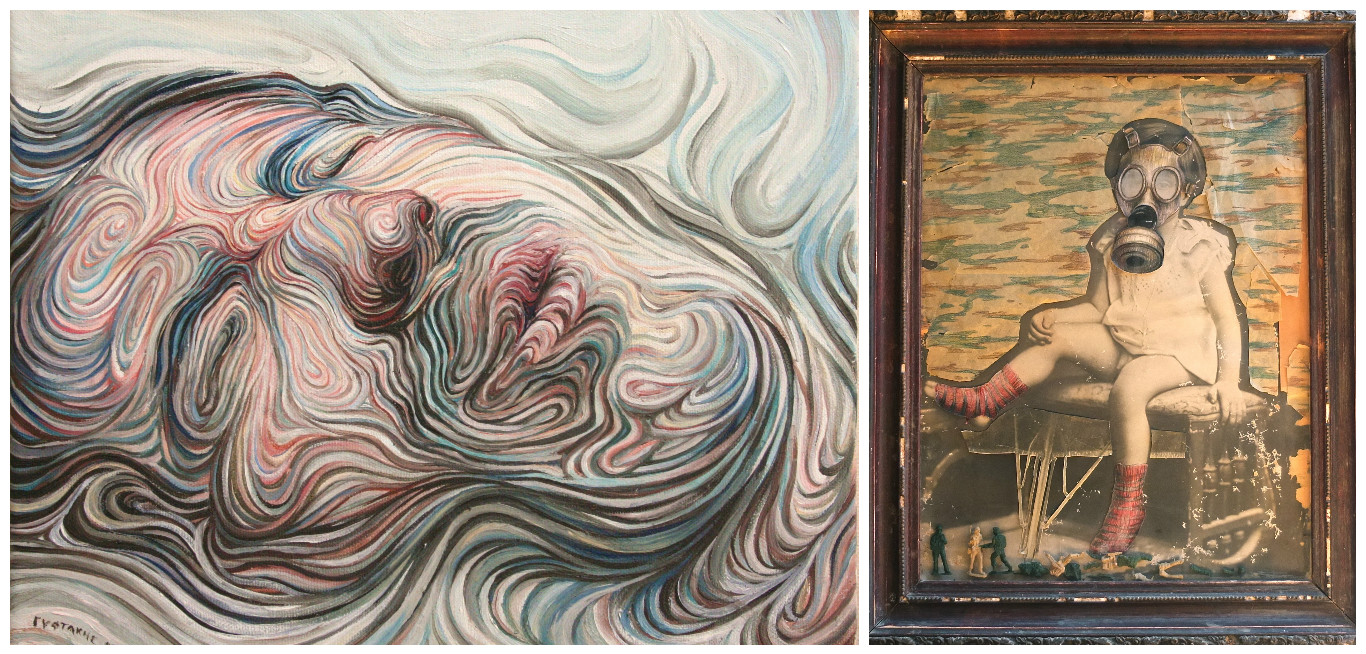 In your collage artwork, you combine different notions and materials in a unique way. What are your expectations when using this way of expression?
In your collage artwork, you combine different notions and materials in a unique way. What are your expectations when using this way of expression?
In my collage / assemblage artworks, I combine painting with many diverse materials. I use old frames, photos, LPs (LP records), puzzles, games and gobelins (tapestry) I have found in flea markets and antique shops in Greece and on my trips abroad. These materials, with all the history they are carrying, give me the possibility to add to my artworks two very important elements for my artistic research: Space and Time. I use them in such a way so as to create a surrealistic dialogue with my portraits; then the portraits do not merely tell their personal stories but also make a social, political and historical commentary on the present and the past, the European North and the European South etc.
You have your own website through which you promote your work online and you are active on Facebook. Do you consider social media as “useful tools” for your work?
I created my own site and started being active on social media about 10 years ago. I do believe that they are important ”tools” for my work since they give me the possibility to present a sample of my work easily, fast and to a very large audience. Of course, one cannot compare seeing and enjoying a work of art “live” with seeing it online. However, if an artist wishes to communicate his/her work to the wider public – even worldwide – the new media now offer possibilities that were not available in the past. It is amazing to see, for instance, that through the Web you can “inspire” a Fine Arts student from New Delhi or sell an artwork to a collector in Seoul or Los Angeles. Some years ago, I think it would have been very difficult, or even impossible for an artist to achieve something like this on his/her own.
What is your relationship with music and how has it affected your painting?
My relationship with music and the classical piano started at the age of six. Apart from keeping me company and being a great way of expression, music taught me the meaning of rhythm. My perception of things until now has been a result of the ever-presence of music in my life. As the most abstract art form of all, music has shown me paths and given me answers that I have resorted to many times in my paintings. A piano chord could potentially be a combination of colors on the canvas, while an art work is definitely comprised of rhythm, movement and the sound-color, no matter if it is visual or auditory.
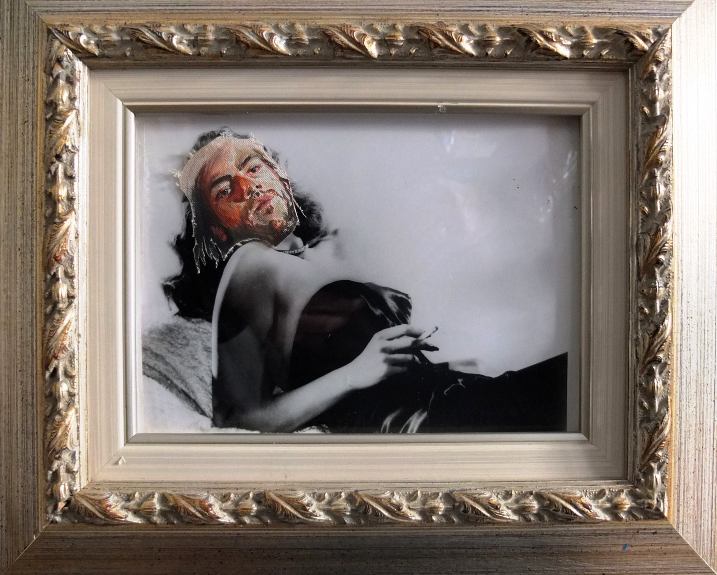 What are you currently up to? What are your plans for the near future?
What are you currently up to? What are your plans for the near future?
I am currently teaching Art to children and adults, I am doing voice & piano rehearsals for my next live show and of course I paint. I am preparing the artworks I will showcase in my upcoming solo exhibition in Fribourg, Switzerland (September 2017) and in “Weaving Europe: The World as Meditation” (one of the European Capital of Culture – Paphos 2017 events, November- December 2017), a very interesting project curated by Dr Efi Kyprianidou.
**Interview by Irini Anastopoulou (GrèceHebdo), translated to English by Eleftheria Spiliotakopoulou
*Nikos Gyftakis was born in Athens, Greece in 1981. He studied Artistic Research at Konstfack University in Stockholm, Sweden, Painting and Stage- setting Design at the School of Fine Arts, Aristotle University of Thessaloniki and Music at the National Conservatory of Athens, Greece. In his record, he has three solo and many group exhibitions in Greece and abroad. Among others, Art-Athina 2016 Platforms project “The waiting room”, “Compassion: on the phenomenology of being ill” curated by Dr Efi Kyprianidou & Penny Monogiou at Bethanien Projektraum in Berlin-Germany, “Portraits and landscapes of Greece” at Europahuset, for the cultural opening of the Greek EU Presidency in Stockholm-Sweden and “Ante Mortem” curated by Vagiti Ultimi, Palazzo Duchi D’ Acquaviva in Atri-Italy. In 2014, he participated in the 5th “Maiden Tower”- International Art Festival in Baku, Azerbaijan and in 2012, he was selected among the 30 finalists in the international competition “Surrealism Showdown”, Saatchi Gallery. He is a member of the “Compassion” arts collective. He has also created the stage-setting and paintings for several movies and theatrical shows and at the same time he has been curating art exhibitions and teaching Art. He lives and works in Athens, Greece.
More info: Visit the artist’s official website; The Liquid Portraits of Nikos Gyftakis (The Greek Foundation); Swirling, Psychedelic Self-Portraits by Nikos Gyftakis (This is Colossal);

